We discuss the 5 essential mics for live bands every group should own, regardless of genre, style or budget, perfect for creating better sound onstage
Perhaps you’re in a cover band and you’re turning up to gigs where the mics are inadequate. Or maybe you’re in a rock band and your live sound isn’t consistent across different venues. Or maybe you’re a budding sound engineer or venue owner looking to improve the quality of sound for your stage. Either way, you should invest in some good mics.
In this buyers’ guide, we’ll be showing you why bands need their own microphones, how many mics a group should have, and which specific mics they need to own – whether you have guitars, vocalists, drummers, trumpet players, or all of the above.
Disclaimer: we’re specifically talking about microphones in a live scenario here. Of course, we could say you need multiple condenser mics, overheads, and a mic for each drum if you want to record live shows or use them in the studio too, but that’s not really viable unless you’re a professional touring band. We’ll get to that eventually in another article, but for now, we’ll keep it simple with the five most important mics for a live band.
So, let’s cut to the chase…
What mics do bands need?
Typically, a live band needs five microphones at a bare minimum and they’ll almost always be dynamic with a cardioid polar pattern. This effectively rejects off-axis sound i.e., the sound of the other musicians and instruments.
In summary, a band needs the following mics for live shows: vocal microphone, guitar cab microphone, bass cab microphone, kick drum microphone, and snare microphone. But why? Let’s dig deep. To be specific, we’re talking about bands with the following setup – singer, guitarist, bass player, drummer.
1. Live vocal mic
Singers, you need your own mic, not least because you don’t want to share a microphone that hundreds of people have used.
Hygiene reasons aside, it’s important to have a mic that you know you can rely on at each gig.
You may have a signature sound, style of performance, or penchant for the way a mic feels in your hand. Your live vocal mic is an extension of you – the same way a guitarist chooses a guitar or a drummer chooses a snare. If you’re wondering what type of microphone a singer needs for a live show, a dynamic cardioid microphone is widely regarded as the best.
Why dynamic? Dynamic mics are far more rugged and hard-wearing than any other type. The benefit for musicians is that they can withstand years of use, drops, knocks, and transport. They also don’t need a power supply to work, so you can just simply plug into the PA system and you’re good to go. Additionally, they can handle high sound pressure levels (SPL) which means they’re great for all manner of vocals. And an extra bonus – they’re cheaper than the likes of condenser or ribbon microphones.
Why cardioid? The reason for this is that the cardioid polar pattern rejects any off-axis noise and ensures that your voice is the only thing the microphone picks up.
What’s a good live vocal mic for a band?
The industry-standard live vocal microphone is arguably the Shure SM58, closely followed – or beaten, depending on your preference – by the Shure Beta 58A. Both are perfect for any type of live vocals. You can read the comparison between the SM58 and Beta58A here to find out which one is right for you. To learn more about the Shure Beta Series check out this blog here – WHAT ARE SHURE BETA MICS AND WHY DO I NEED THEM?
If you’re just starting out – the SM58 will never let you down. In fact, it’s likely to outlive you. More than one vocalist? Check out the SM58 3-pack.
Shop now | Shure SM58 Dynamic Cardioid Vocal Microphone
Shop now | Shure Beta 58A Dynamic Microphone
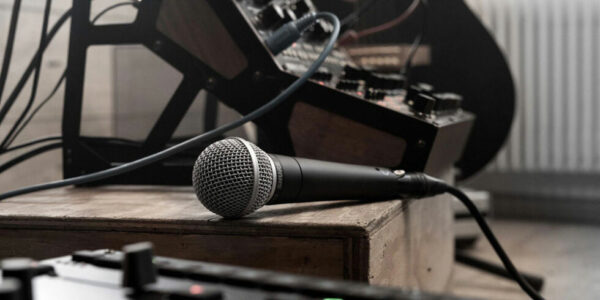
2. Guitar cab mic
If you’re an electric guitarist playing with an amp onstage, you need a good-quality guitar cab mic.
Using the same mic for each gig retains your signature sound and ensures you get the sound you want out front.
Again, the dynamic microphone is the best choice for touring musicians. A cardioid, or ideally supercardioid, polar pattern is also ideal.
Why dynamic? Again, it comes down to its hard-wearing capabilities – both in physical and sonic nature. A ribbon or condenser microphone’s capsule is far too sensitive to travel with. A slight knock or bump and you’re potentially going to damage it.
However, dynamic microphones can take years of (ab)use. The fact that they can handle levels louder than a jet engine means you’re not going to run into any trouble with a fully turned up VOX AC30 or Marshall stack. The mic can handle it.
Why cardioid? You can read our explanation of microphone polar patterns here to gain a better understanding. Again, the cardioid pattern ensures the sound of your amp is the only thing the mic picks up. This means your sound engineer can really bring out the qualities of your guitar amp, creating a better chance of your guitar solos sounding superb.
Supercardioid is also ideal – this is just a far tighter pattern with greater off-axis rejection.
What’s a good guitar cab mic for a live band?
The Shure SM57 is widely regarded as the best guitar cabinet microphone on the market today. This has been the case since it was released in 1965. Used by the likes of Steve Albini and every United States president since Lyndon B. Johnson – it’s safe to say the SM57 is as versatile as you need it to be.
The smaller head ensures you capture the exact sound source, which is perfect for guitar cabinets of all sizes. You can also position it in a wide variety of areas on the speaker cone to get a different “feel”.
Plus, it’s one of the best microphones for recording acoustic guitar on a budget or playing acoustic guitar in a live band scenario. And it’s widely regarded as one of the best snare mics too, but we’ll get to that in a moment.
How many mics should a guitar have?
You only need one microphone per guitar cab, but you can use two if you want to use a stereo mic technique. Recording acoustic guitar or electric guitar is another story entirely.
Shop now | Shure SM57 Dynamic Instrument Microphone
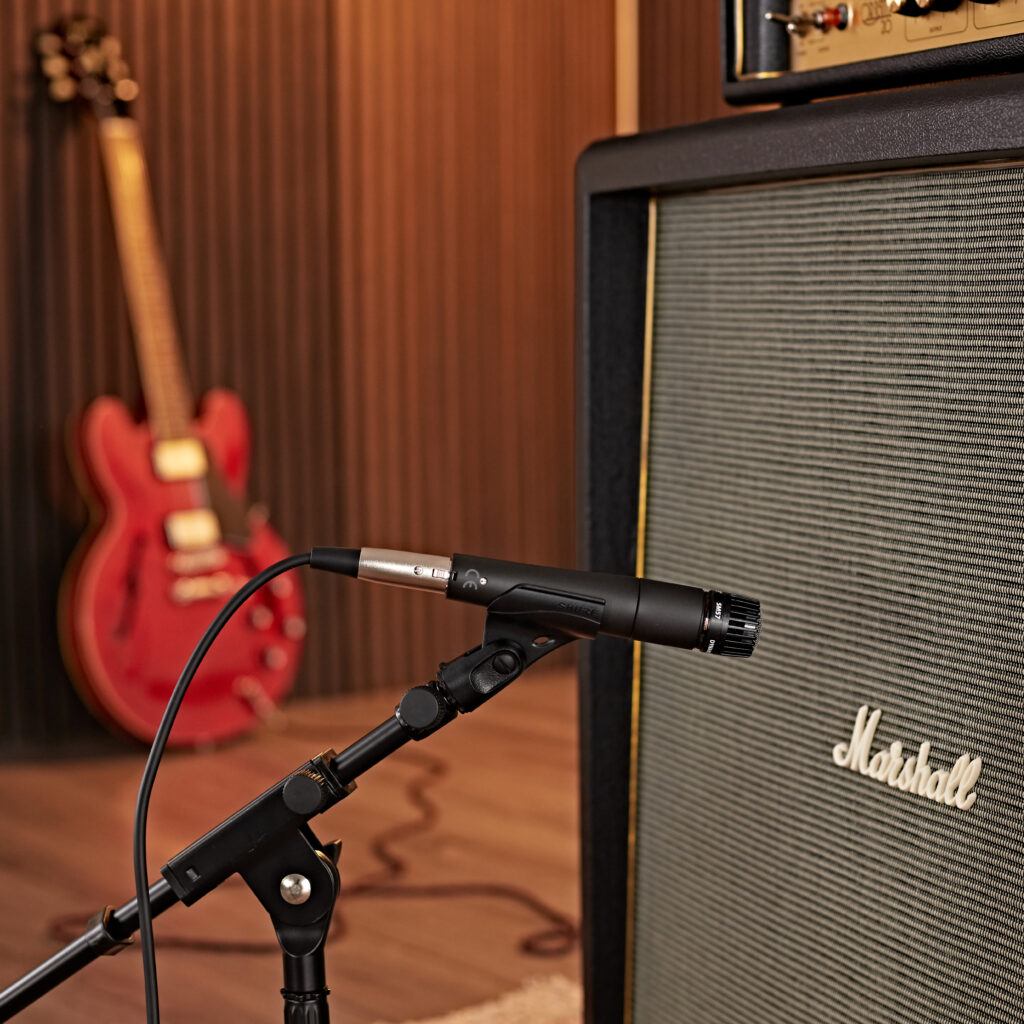
3. Bass cab mic
Some engineers will argue with me on this but hear me out. One of the main reasons you need a bass cab microphone is to retain the quality and unique “feel” of your bass amp and its speakers.
If you’ve spent hundreds, if not thousands, on a particular sounding bass amp, you don’t want to lose the quality of sound coming from the speakers when you DI it.
Of course, the engineer will almost always use a DI box to capture the sound of a bass amp as it’s easier to mix the bass, and that’s fine. But if you add the sound of a bass cab mic into the mix, you have even more sonic options.
This is especially useful if you’re in a band that relies heavily on distorted bass tones or you use a bass tube amp with a whole host of unique qualities. Dynamic and cardioid mics are key here. Specifically, supercardioid, if possible.
Why dynamic? As always, it comes down to sound pressure level with a dynamic mic. You’re likely to turn your bass up pretty loud so you can hear it on stage. A dynamic mic will be able to handle that volume and it’s robust enough to withstand the constant sound pressure, gig after gig.
Why supercardioid? Bass amps push a lot of air around and unless you’re a very treble-heavy player, you want to get as much detail into the live mix as possible. The supercardioid polar pattern rejects all the sound around it, concentrating on a single spot of the bass cab.
Top tip: with a bass cab mic, you want to record slightly off-axis and off-centre to get the fullest sound with added detail.
What’s a good bass cab mic for a live band?
The likes of the Sennheiser e609 Silver Supercardioid Dynamic Microphone or the Shure Beta 52A are some of the best bass cabinet microphones around. They can handle the lower frequencies well and provide incredible detail at louder volumes.
Sennheiser’s e609 has a flat body shape, allowing it to be placed closer to your amp. Suitable for bass and guitar cabs, it has been designed for touring, owing to its rugged mesh grille, advanced shock mount design, and low self-noise. The hum-compensating coil is perfect for bass players as bass cabs tend to pick up unwanted hum, depending on the venue and quality of electrics onstage.
The Shure Beta 52A Bass Drum Microphone appears twice here. It’s one of the best bass cab mics in the world thanks to its supercardioid polar pattern, almost indestructible design, and advanced shock mount system that can withstand the heaviest of bass players (and drummers) who like to play loud.
It has been fine-tuned to harness super-low sub frequencies – making it ideal for bass cabinets. The key benefit here is that it provides that all-important midrange punch which you need in a live band. You also get a gentle top-end boost for some extra presence onstage too.
Shop now | Sennheiser e609 Silver Supercardioid Dynamic Microphone
Shop now | Shure Beta 52A Bass Drum Microphone
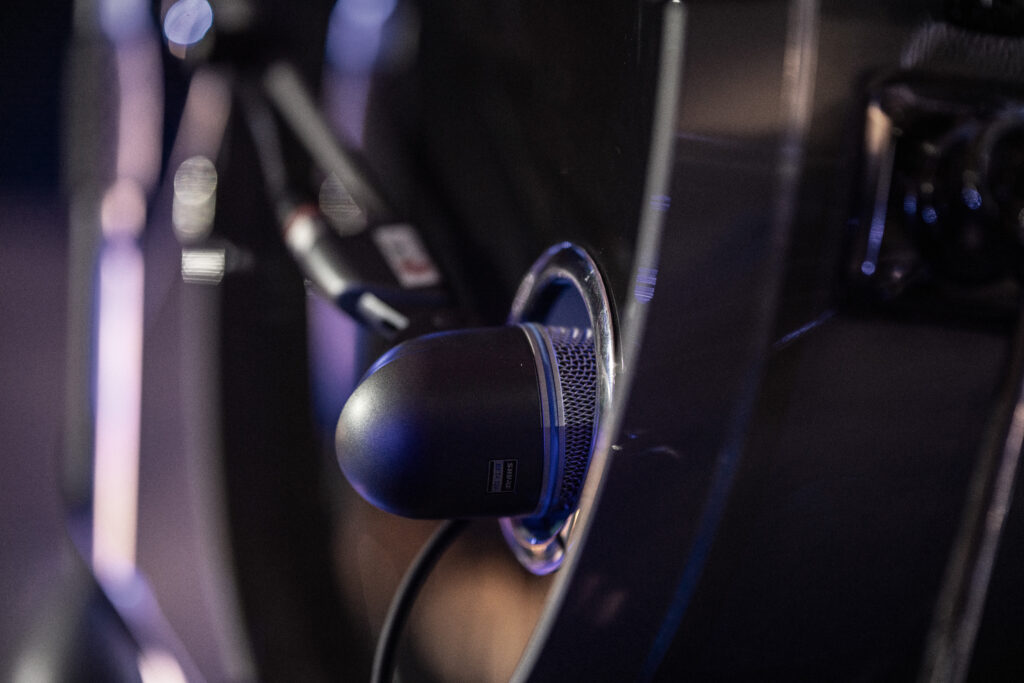
4. Kick drum mic
Not all stages and drum kits are created equal. If you have a hollow stage, you’re going to lose all the power and “kick” from your kick drum unless it’s mic’d up.
Most venues will already have a kick drum to hand, but it comes down to sonic signature and reliability. How many times have you turned up to a gig to find that the house kit is absolute garbage and you wish you brought your own? The same goes with a microphone.
Your kit’s kick and snare are arguably the most important parts (of course, high hats are too… but just hear me out). So, the higher the quality mic on your kick, the higher quality your performance will be. You want the audience and your bandmates to really feel that kick coming through!
You only really need three mics for a drum kit, as per the Glyn Johns method, but considering you won’t need to mic up cymbals or overheads at small venues, you’re all set with a kick and snare mic to start.
You can rely on the venue’s tom and cymbal mics for now if you’re just starting to perform live.
Again, you guessed it – dynamic mics with cardioid polar patterns are preferable here.
Why dynamic? Kick drums move a lot of air around, and their high transients (explosive sound) will potentially break or damage more sensitive microphones like ribbons or condensers. They also spend a lot of time on the floor and could potentially be kicked around – it happens! Dynamic mics are designed to be tough.
Why cardioid? You need the detail to come through in a kick drum. The detail is where you get the “punch” from. A cardioid polar pattern will take the direct impact of the beater whilst capturing enough of the weight and bass from within the kick drum, giving you a well-rounded sound.
This ensures your kick has the right amount of concentrated treble and surrounding bass. Again, supercardioid is preferable here as too much off-axis noise will encourage a “boominess” that drowns out the detail.
What’s a good kick drum mic for a live band?
There are two industry-standard kick drum mics we recommend: the Shure Beta 52A and the AKG D112 MKII Kick Drum Microphone.
Shure’s Beta 52A Bass Drum Microphone is an industry-standard kick drum mic. The deeper construction of the microphone provides a touch more bass than most microphones out there, pulling the super-low sub frequencies to the forefront of your sound for a seriously powerful punch.
The Neodymium magnet offers greater sensitivity and a higher output, so your sound engineer will be able to bring out the best qualities of your kit and your performance. An advanced shock mount system then eradicates vibration noise. This is perfect for kick drums on a raised platform as it means any vibrations from the hollow ground won’t make it into the mix.
In addition, the supercardioid polar pattern ensures there’s minimal bleed from other sound sources.
The AKG D112 MKII Kick Drum Microphone features an integrated hum-compensating coil which keeps unwanted noise to an absolute minimum – perfect for noisy venues and full band setups. Its high SPL capability of 160dB lets you capture the loudest kick possible without distortion creeping in.
A cool feature of this mic is its narrow-band presence boost at 4kHz. This complements the low end, allowing you to cut through the mix at all times – everyone is going to hear your kick!
Shop now | Shure Beta 52A Bass Drum Microphone
Shop now | AKG D112 MKII Kick Drum Microphone with Flexible Mount
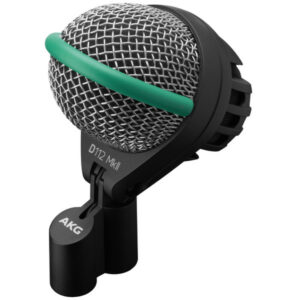
5. Snare drum mic
This is perhaps the most important mic for a drummer to have. Your snare is the truest representation of your sound and playing style, so it’s important to have a microphone that represents this accurately in a live mix.
A snare drum mic means you can turn up to a gig confident that the sound engineer will capture the qualities and detail of your snare. Your audience will hear every hit, roll, and ghost note with complete accuracy. Of course, most venues will have one, and they’ll likely have the one we’re going to recommend, but it’s always a good idea to have your own.
A dynamic microphone with a cardioid or supercardioid polar pattern is an absolute essential for the live set-up.
Why dynamic? Dynamic mics are designed to handle high-pressure sound levels and fast transient noises. Snare drums deliver explosive sounds at high volume. You’ll need to close-mic a snare in a live gig to get the detail, and a dynamic mic will be able to handle the hard hits from the snare.
Why cardioid? Cardioid will reject the sounds from the rest of your kit, stopping the toms or cymbals from interfering with your snare sound in the mix. The cardioid’s focused point of recording will capture the detail of your snare and retain all the qualities of your wood, skin, and even the dampening sound of your moon gel.
What’s a good snare drum mic for a live band?
Used for recording the snare on AC/DC’s Back In Black, the Shure SM57 is the industry standard. It was also counted on for Kurt Cobain’s vocals on Nevermind.
Any buyers’ guide to live mics will have the Shure SM57 in. It’s one of the essentials. There are plenty of other options out there, of course, but the Shure SM57 is easily the most popular snare microphone of all time. This is because it’s essentially indestructible and can handle a wide range of sound sources at huge sound pressure levels without distorting – like your snare!
The gentle presence boost at 4kHz provides extra clarity, so you can enjoy the details of different snare drums. It’s also under £100, which is incredible value for such a world-renowned snare mic.
But if you can’t quite stretch your budget to the SM57, the SubZero Dynamic Instrument Mic with Cable and Low Mic Stand is another great option. It’s perfect for bands who are just getting started or venue owners who want to ensure a positive experience and good sound quality for performers and sound engineers alike.
Shop now | Shure SM57 Dynamic Instrument Microphone
Shop now | SubZero Dynamic Instrument Microphone
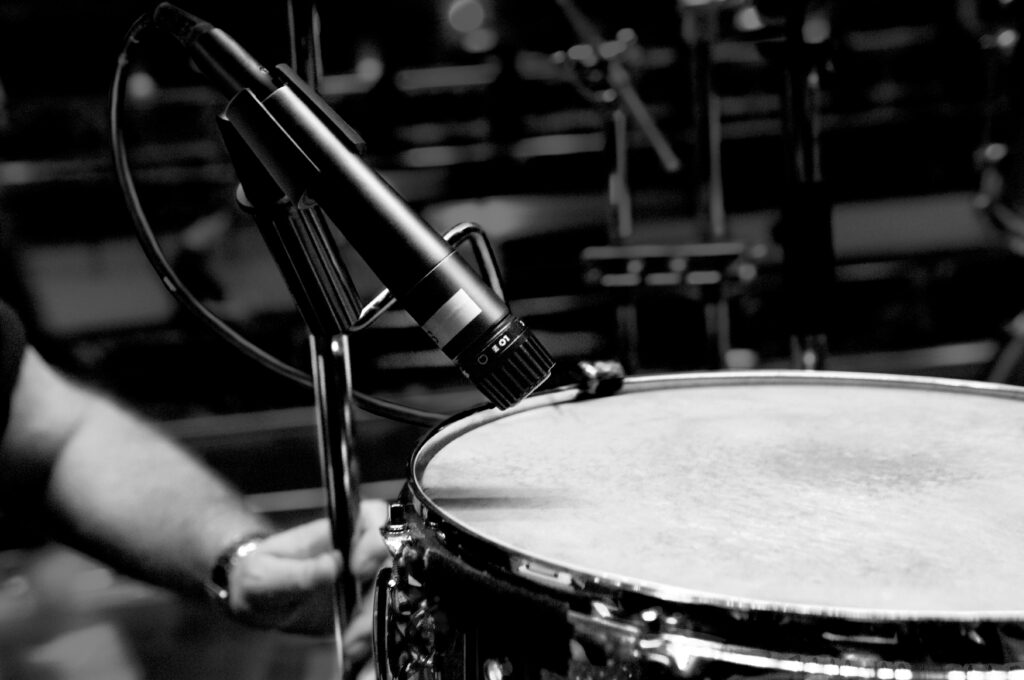
Final thoughts
At the end of the day, most professional venues have a range of microphones for you and your sound engineer to use. So don’t panic just yet if you’re about to play your first gig.
But if you want to make sure you’re getting the best sound possible, use your own microphone whenever you can, especially if you’re a singer. You’ve invested in quality instruments so there’s no point in letting them down with poor-quality microphones.
It’s like buying a guitar with old, mismatched strings, not warming up your voice, or playing a snare with a broken skin – you’re not going to get the best sound possible. So why risk it?
That wraps up our live mic buying guide. Post a comment below if you have any questions, or let us know if you think we’ve missed any microphones you’d recommend for live bands.

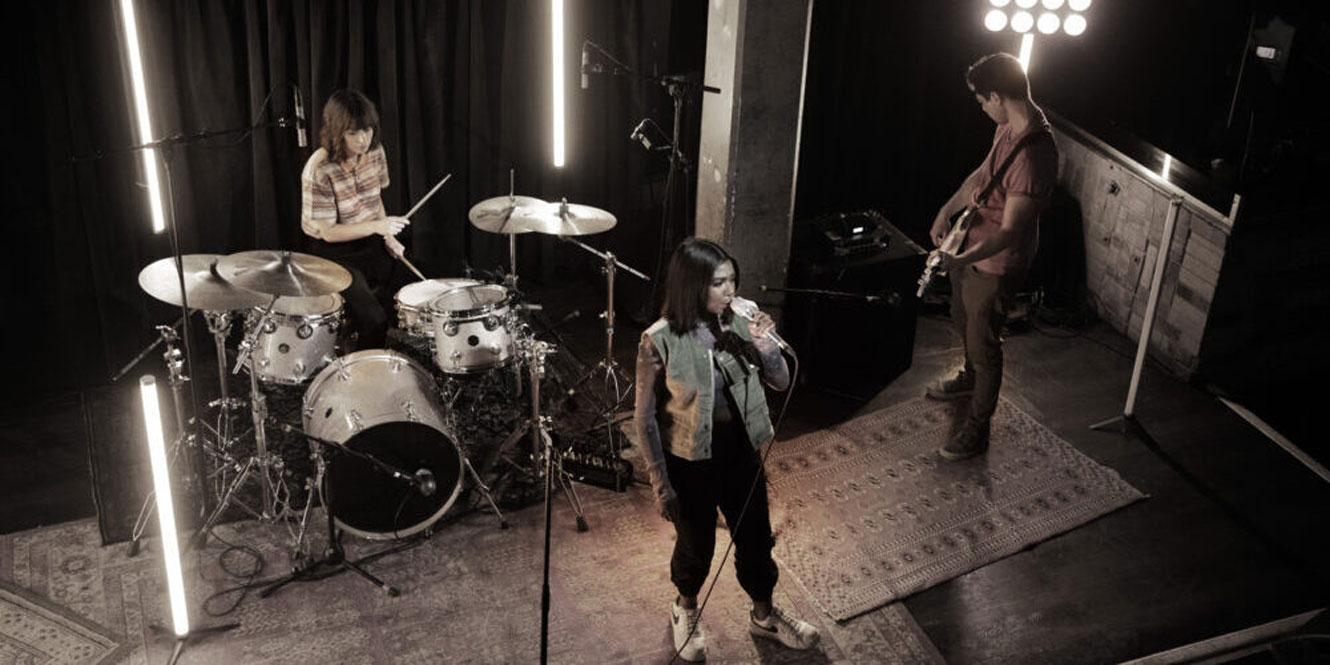











0 Comments